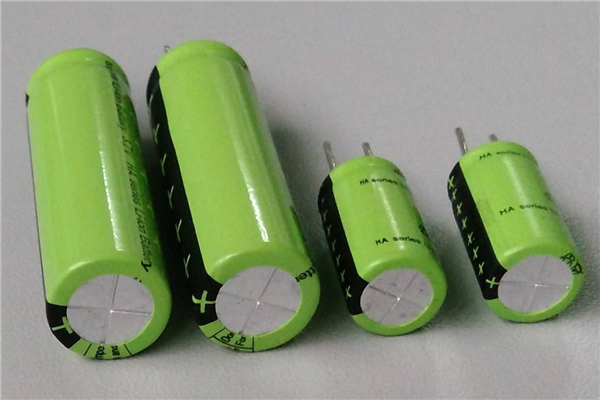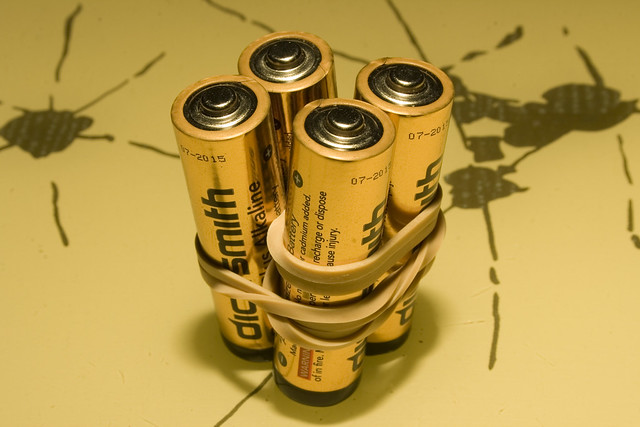How Do Rechargeable Lithium Ion Batteries Work?
Nov 18, 2019 Pageview:1263
Lithium battery pioneering work began in 1912 under G.N. Lewis, but the first non-rechargeable lithium batteries were not commercially available until the early 1970s. In the 1980s, attempts to develop rechargeable lithium batteries followed, but failed due to instability in the lithium used as anode material.
Lithium is the lightest of all elements, has the greatest electrochemical potential and provides the greatest specific energy per weight. Rechargeable lithium metal batteries on the anode could provide extraordinarily high densities of energy; however, in the mid-1980s it was discovered that cycling created unwanted dendrites on the anode. Such molecules of growth enter the separator, creating an electrical shortness. The temperature of the cell will rise rapidly and reach the lithium melting point, causing thermal runaway, also known as "heat venting." After a battery in a mobile phone leaked burning gases and caused burns on a man's face, a large number of metallic lithium rechargeable batteries sent to Japan were recalled in 1991.
Lithium metal's inherent volatility, especially during charging was shifted by using lithium ions to a non-metallic solution. Sony launched the first Li ion battery in 1991, and today it is the most popular and fastest growing battery in the market. While lower in specific energy than lithium-metal, Li ion is safe as long as the limits of voltage and currents are respected.
Are All lithium ion batteries Rechargeable?
Almost all lithium ion batteries are rechargeable as they are formed on the principle pf memory affect and has the capability of storing charge. Portable electricity is provided by lithium and lithium ion batteries or cells. Both work by chemically storing electrical charges; the charges flow from the cathode of the battery to its anode when you connect their electrodes to a wire, producing an electrical current. Every type of lithium ion batteries have advantages and disadvantages based on its configuration.
It is not easy and safe to recharge lithium batteries; this problem has led to the invention of lithium ion batteries. Before they become ineffective, they can be charged several times. However, lithium batteries are not rechargeable but offer more than lithium ion batteries in terms of capacity. These have a higher density of power than batteries with lithium ion. In comparison to lithium ion batteries, lithium batteries use lithium metal as their anode, using a variety of other materials to form their anode. Lithium ion batteries are weakened because their shelf life is roughly three years, beyond which they are useless but around these years it can be recharge easily.
There is a difference between a lithium battery and a lithium ion battery, since lithium battery contains lithium metal as anode that is why they are not rechargeable whereas lithium ion batteries do not contain such metal but instead they contain ions which ionize on their respective electrode that is why they are rechargeable.
How Long Does A Lithium Ion Battery Hold Its Charge?
After a number of experiments and reviews from the users it has been seen that a lithium ion battery can hold charge for many months and will maintain a charge. However, it's safer to store a partially or fully charged lithium-ion battery. Occasionally, a very low-charged lithium-ion battery is stored for a long time (many months) and its voltage drops slowly below the level at which it can be charged again due to its built-in safety mechanism. It's a good idea to take it out and recharge it after a few months if the battery is going to be stored for several months. It would be better to use the battery every few months and then leave it partially or completely charged so you can use it easily and it won’t create any problem for you.
How Do You Use Lithium Ion Battery According To Its Working Principle?
Lithium ion batteries work on the principle of electrolysis which contains an electrolyte , cathode and anode, however, it is not suitable to say cathode and anode instead it’s better to call them positive terminal or a negative terminal.
Like any other battery, one or more power-generating compartments called cells are made up of a rechargeable lithium-ion battery. In essence, each cell has three components: a positive electrode (connected to the positive or+ terminal of the battery), a negative electrode (connected to the negative or ? terminal) and a chemical called an electrolyte in between. A positive electrode is usually formed from a chemical compound called lithium-cobalt oxide (LiCoO2) or, in newer batteries, from lithium-iron phosphate (LiFePO4). Generally, the negative electrode is made of carbon (graphite) and the electrolyte varies from one type of battery to another — but it is not too important to understand the basic idea of how the battery works.
In broadly the same way, all lithium-ion batteries work. When the battery charges up, the positive lithium-cobalt oxide gives up some of its lithium ions that move through the electrolyte to the negative graphite electrode and stay there. During this process, the battery absorbs and stores energy. When the battery is discharged, the lithium ions move back across the electrolyte to the positive electrode, generating the energy that powers the battery. In both cases, electrons flow to the ions around the outer circuit in the opposite direction. Electrons do not pass through the electrolyte: as far as electrons are concerned, it is essentially an isolating barrier.
The ion movement (through the electrolyte) and the electrons movement (around the external circuit, in the opposite direction) are interconnected processes and the other process stops if either. If ions stop moving through the electrolyte as the battery discharges completely, electrons will not be able to move through the outer circuit either— so you lose power.
Likewise, when you turn off whatever the battery is driving, the electrons will stop flowing, and so will the ion stream. The battery basically starts discharging at a high rate (but it continues discharging, even when the device is removed, at a very slow rate).
Lithium-ion batteries, unlike simpler batteries, have been designed into electronic controls to monitor how they load and discharge and same is their working principle and in the same way it has to be used.
- Prev Article: Where do you dispose of lithium batteries?
- Next Article: What To Do With A Swollen Lithium Ion Battery?
Leave Message
Hottest Categories
-
Hottest Industry News
-
Latest Industry News











